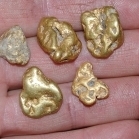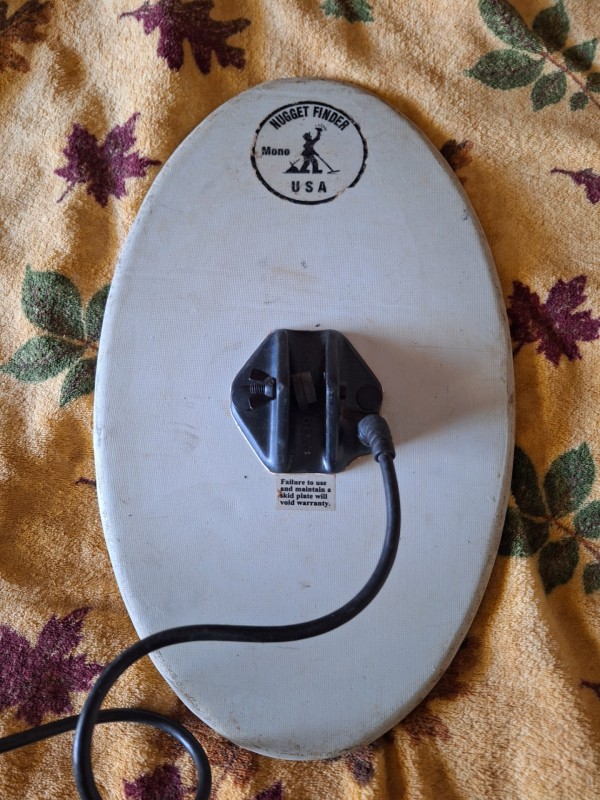
Dutchman4
Full Member-
Posts
119 -
Joined
-
Last visited
-
Days Won
2
Dutchman4 last won the day on October 21 2023
Dutchman4 had the most liked content!
Profile Information
-
Gender
Male
-
Location:
Southern CA
-
Interests:
Upland Game Hunting, Rock Hounding, Nugget Hunting, Desert Camping
-
Gear In Use:
Fisher Gold Bug Pro, all 3 coils, Garrett ATX (sold), Minelab SDC 2300, Minelab GPX 6000.
Recent Profile Visitors
1,024 profile views
Dutchman4's Achievements

Silver Contributor (4/6)
268
Reputation
-
So I picked up a GP3000 a few days ago including an assortment of coils. This NF 17x11 is the only mono coil in the bunch and it appears to be an older model with a fiber glass body. Do any of you old timers have any experience with this coil regarding depth (on 2g+ nuggets) and stability vs the more modern coils?
-
That is generous of you Dave and I may take you up on that offer when I make a return trip to the patches. At least it will settle my mind on what could be at depth.
-
Kingswood, I see in your list that you own the GPX6000 and GP3000 so you would know if the GP3000 with the 24x12 ufo mono would have a depth advantage over the GPX6 on larger gold. If this advantage is minimal then I will just get the 17x13 mono for the 6000 and hope it adds some depth over the stock 11.
-
Hey Rob, So it appears you are saying that a stock GP3000, with the right coil, wont have a significant depth advantage over a 6000 with the 17x13 coil, on 3g+ nuggets.
-
It is obvious to me that these patches are virgin ground since I am finding multiple nuggets up to 2.5 grams in size that should have been found by any PI machine and probably most VLF also. The average depth of these nuggets was 5 to 10 inches.
-
I have a GPX6k that I have had good success with over the last few years. I have found several patches that yielded in the range of 8 to 15 nuggets each with biggest ones at 1.7g and 2.5g. I have considered going back to these patches and start layering off the surface to gain more depth but that sounds like a lot of work. I have also considered getting the 17x13 coil for the 6k to gain more depth but the reported depth gain appears to be only about 1 inch over the stock 11 coil if that is true. Another option I am considering is to purchase an older Minelab PI and combine it with the best coil for depth, so that I can use it to go over patches (that I have cleaned out using the 6k) to find larger (3-5g and larger) nuggets at depths deeper than the 6k is capable of. So just to be clear I want a machine that is dedicated/configured for increased (at least 3+ inches deeper than 6k) depth on larger gold, has a stable threshold and the ability to handle ground mineralization and hot rocks better than the 6k. It does not need to be an all around machine that can also find smaller shallow gold since I have the 6k for that, but if it can then that would be a bonus. I want to limit my budget to a max of $1500. After some research and input from friends I have been advised to consider the following models: SD2200D - Reported to be one of the deepest machines Minelab has made. Apparently the extra depth is due to the detector power supply being unregulated and the full voltage from the battery is available to the coil. Are Lithium battery packs, either commercial or home made, adaptable to this machine? On an unregulated machine I would think that a lithium battery would be preferred. At the same time I read that using mono coils on this detector is not practical because they generate too much ground noise and to use DD coils instead. A DD coil cuts the width of the coil in half with an associated loss of depth so I am confused how this machine can be deep when only using DD coils unless very large DD coils are recommended. I would like to limit max coil size to between 15-18" round. I would prefer to limit cost to between $600 and $900 on such an old machine in case it dies and the faulty component is no longer available. I have the skills to troubleshoot to the component level and make repairs on older "through hole" technology PCB's as long as the components are marked and available. What is the best coil for depth on this machine? GP3000, 3500 - I dont know much about these machines and if they would meet my requirements for depth, stability, etc. Would this be a better choice than the SD2200D? What is the best coil for depth on this machine? GPX4500, 4800, 5000 - A GPX4800 or 5000 with a NF 15" round evo mono coil (or similar) looks to be the best and the most expensive option. I might have to look for a long time to get a below market value price on one. Please advise, regards, Ceril
-
The discovery of the crash site is quite a story. Thanks for sharing, Ceril
- 1 reply
-
- 1
-

-
Axiom Initial Thoughts And Hunt Updated
Dutchman4 replied to CarsonChris's topic in Garrett Metal Detectors
The next ones will come easier, at least it did for me. Keep it up. -
Interesting way to store electric energy
-
I'm still of the opinion that if you own a 6000 then you don't need an Axiom and also the other way around.
-
I was up in Spokane, WA for that 2017 Eclipse also. It got quite dark and cooled off considerably. We were in park next to a river and as soon as it started getting dark the Canadian geese' that were sunning themselves on the grass, walked to rivers edge and swam over to an island to roost for the night. Then some minutes later when the sun came out again they came back on shore and resumed sunning.
-
I lived in Mesquite, NV for 3 years and joined GSSN club, they have claims in Gold Basin/Lost Basin, AZ and also in Johnnie, NV. I found some nuggets in Gold&Lost Basins but it was one of the harder areas to find gold for me. I had better luck on the Pale Burro claim in the Johnnie district and the surrounding areas.
-
Gang I Need Your Help. Regarding Hip-stick Lengths
Dutchman4 replied to Doc's topic in Detector Prospector Forum
I'm 5' 10" and measured 19.25 inches. -
Two different scenarios are being described here: 1. The original question was "what would happen if one was to turn a PI on without a coil connected?" In this case I would also expect that nothing would or should happen because there is no load (coil) and there should be no current flow. 2. What would happen when "hot swapping a coil" or better said swapping a coil when the detector is turned on. In this case the load (coil) is being disconnected and/or connected with the detector on and hopefully the detector is designed to withstand this but I would consider this risky with any piece of electronic gear that has an external load connected with a cable or wire.
-
Minelab GPX 5000 Discontinued In U.S. ?
Dutchman4 replied to Steve Herschbach's topic in Detector Prospector Forum
I have refurbished 80's vintage high end audio amplifiers by replacing ALL the electrolytic capacitors and they will work brilliantly for another 20 to 30 years. Electrolytic caps age, leak, swell and degrade over time.




.thumb.jpg.4bb4c6c4da978cb5eac96e6390d8f36c.jpg)

